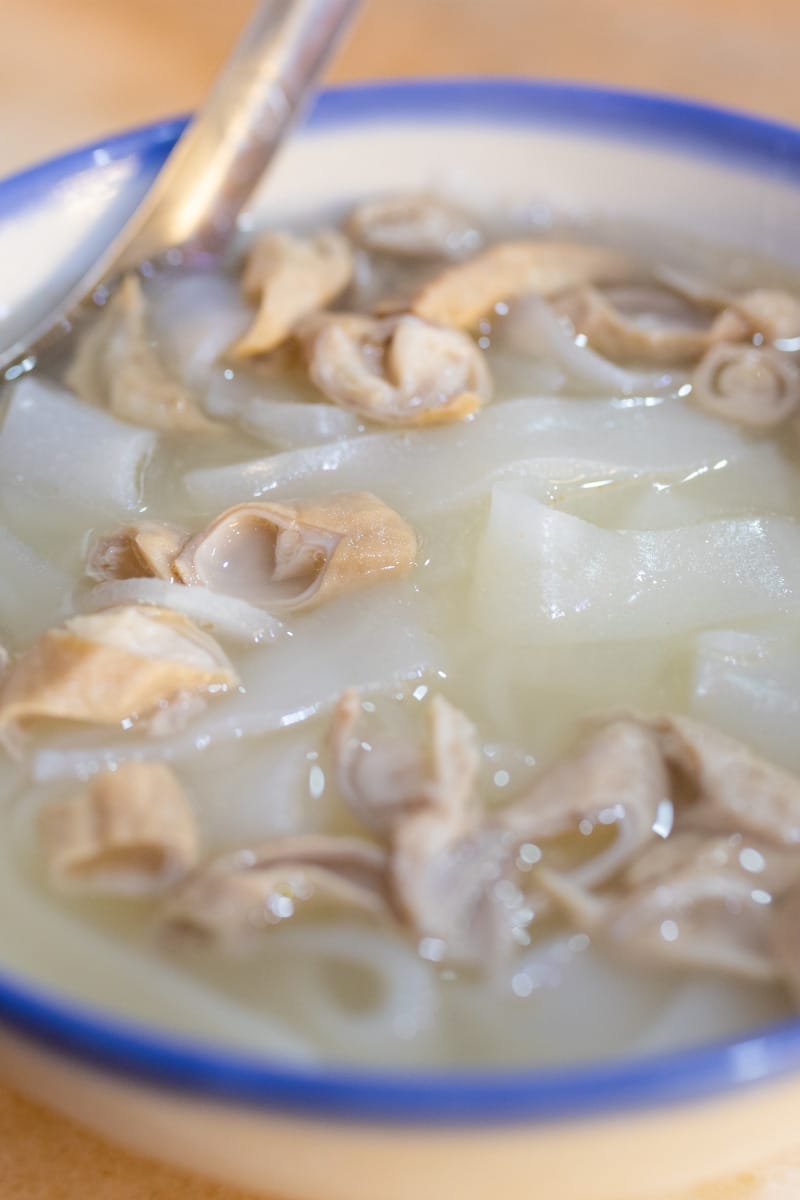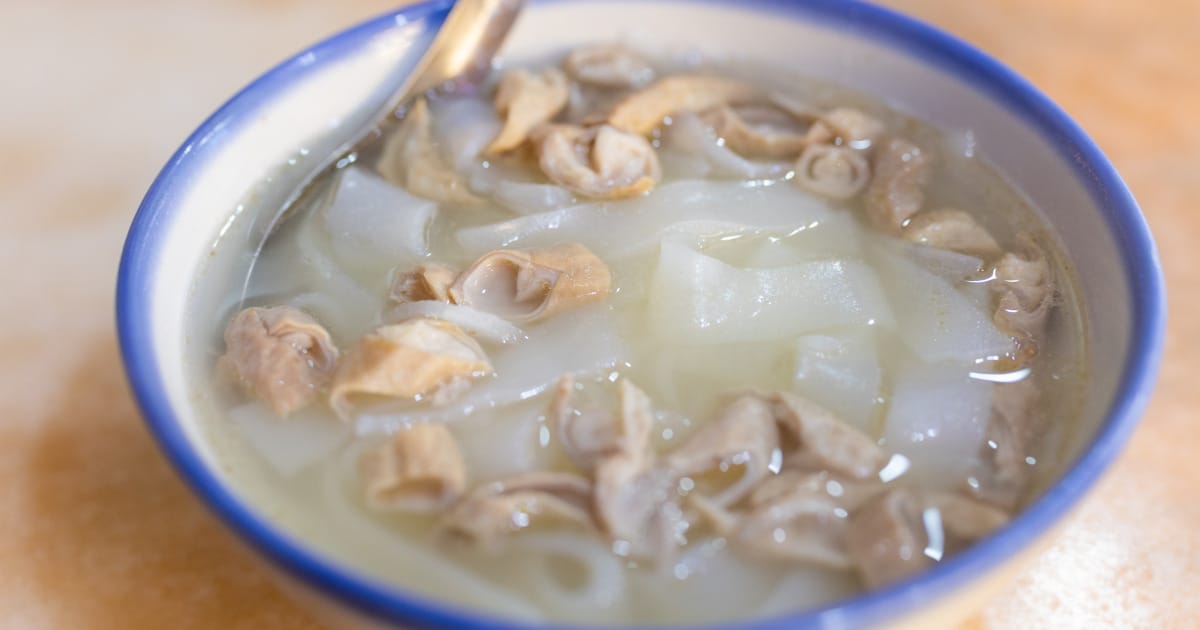Chitlins, aka chitterlings, are cleaned and cooked pork intestines. They’re usually either stewed or breaded and fried and served as a classic soul food delicacy.
The flavor of chitlins is earthy, rich, and gamey. Prepared properly, they can have a buttery texture. Some people say that the consistency is similar to calamari and other types of seafood. The cooking method and seasonings will affect the flavor and texture, however. Undercooked chitlins, for example, may be rubbery.
What are chitlins?
Chitlins in the U.S. use the small intestines of pork — though this can vary in other parts of the world. Some of the more well-known chitterlings variations include:
- Chitlins sold in the United States typically include pork intestines and pork rinds.
- In Scotland, haggis is made with the internal organs of all animals, especially sheep, and includes their hearts, lungs, and livers.
- The tripe and intestines of a pig are what is typically found in French tricandilles.
- In Korea, the dish known as gopchang is made with beef with small intestines and vegetables in season.
- Creole chitterlings are a dish popular in the Caribbean made with gizzard and various Creole spices.
How are chitterlings prepared and served?

You can make chitlins in various ways. Eight popular methods are introduced below.
- Fried: Chitterlings are cleaned, boiled, and then deep-fried until crispy. They can be seasoned with various spices and served as a crunchy snack or appetizer.
- Stewed: Chitterlings are cleaned, boiled, and then simmered in a seasoned broth until tender.
- With rice: Serve cooked chitlins over rice with a flavorful sauce or gravy.
- Tacos or wraps: Use cooked chitlins as a filling for tacos or wraps. You can add traditional taco toppings like salsa, lettuce, and cheese.
- With grits: Pair cooked chitlins with grits.
- With cornbread: Cornbread’s sweetness plays nicely with savory chitlins.
- Soup: Chitlins soup is a hearty and flavorful dish.
- With hot sauce or vinegar: Many people like to consume chitlins with a spicy condiment for extra flavor and tang.
Chitlins smell
Chitlins have a strong and foul odor, so preparing them is not for the weak at heart. They must be cleaned thoroughly to minimize the smell. The cleaning process can involve multiple rounds of boiling and/or the use of lemon or vinegar to minimize the smell. For more information, see: How to cook chitterlings without the smell.
To enjoy the rich flavor of this Southern dish, it’s best to manage the smell first. You and your guests may be reluctant to take a bite if the smell is overwhelming or offensive. Also, an intensely pungent odor could indicate the chitlins weren’t cleaned thoroughly, which means they’re not safe to eat.
Are chitlins healthy?
Chitterlings are high in fat and cholesterol. A serving of 100 grams of chitlins will provide you with:
- About 296 calories
- 11 grams of protein
- 28 grams of total fat, about 10 of which is saturated
- 330 mg of cholesterol
The cooking method can of course change those numbers. Deep-frying chiltins for example would add fat content to an already fatty dish.
Is a chitlin safe to eat?
Chitlins are safe if you take the right precautions when preparing them. You need to clean and cook them thoroughly to reduce the risk of food-born illness such as yersinia enterocolitica. Yersinia enterocolitica is a bacteria found in pigs that can cause diarrhea, fever, and joint pain in humans. It can appear between 1 and 11 days after eating contaminated chitlins.
To avoid any issues, follow these best practices when preparing pig intestines:
- Clean and prepare chitlins in a sanitary manner. Keep kids out of the kitchen. Children are more susceptible to yersinia enterocolitica than adults.
- The Food Safety Centre strongly recommends washing your hands repeatedly and keeping the kitchen clean.
- Use an antibacterial product to clean all surfaces in contact with raw chitlins.
- Boil uncooked chitlins for at least two hours. If you intend to fry them, do so after they’ve been boiled. For more information, see: How long to cook chitterlings.
- Never eat chitlins raw.
- When you can, buy chitlins that have already been cooked.
- Freeze raw chitlins unless you intend to clean and cook them within 2 days.
The custom of eating chitlins
Eating chitterlings is a culinary tradition with deep roots in Southern cuisine, particularly in African American culture. The tradition originated from times when African Americans had limited access to other cuts of meat. Using less desirable parts of the pig, such as chitterlings, was a way to make the most of available resources. That tradition has come to represent resilience and has since been passed down through generations.
Chitlins are associated with holidays and special occasions, particularly during the Thanksgiving and Christmas seasons. Many families have a tradition of preparing chitlins as part of a festive meal. The process of cleaning and cooking chitlins may be a shared effort, reinforcing a sense of community.
Conclusion
Chitlins are a culturally significant dish and a symbol of resilience and community. They do have a notoriously intense odor before they are cooked, but you can manage that with careful preparation. The flavor is earthy, rich, and savory and the texture at best is soft and buttery.
For best results, serve chitlins with side dishes that complement their intensity. Slightly sweet flavors work well. You can also add citruses, hot spices, or tangy vinegars to the cooking process to balance the intense taste of this Southern delicacy.
